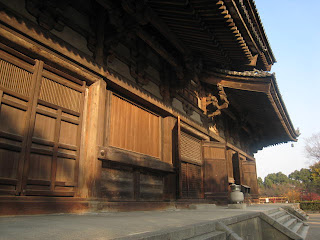 Kasutera (Castella, in English) a popular japanese sponge cake that was introduced by the Spaniards and later, as with most things that evolve into japanese culture, enhanced towards the taste of the japanese people. Still, I was surprised that it was quite sweet. Its an extremely moist sponge cake that takes some skill in making. Here's a recipe from a traditional wagashi book that I picked up. It's baked in a 40x60 cm. cake form. Here they actually use a 40x60 cardboard cake form specifically used for making kasutera and line it with panliner. You can use a 40x60cm cake pan with an extender which would work just as well.
Kasutera (Castella, in English) a popular japanese sponge cake that was introduced by the Spaniards and later, as with most things that evolve into japanese culture, enhanced towards the taste of the japanese people. Still, I was surprised that it was quite sweet. Its an extremely moist sponge cake that takes some skill in making. Here's a recipe from a traditional wagashi book that I picked up. It's baked in a 40x60 cm. cake form. Here they actually use a 40x60 cardboard cake form specifically used for making kasutera and line it with panliner. You can use a 40x60cm cake pan with an extender which would work just as well. Oven Temp.: Top/220 deg. C. Bottom/180 deg. C.
egg 1800 g.
egg yolk 200 g.
sugar 1800 g.
-combine and whip over heat until 40 deg. C.
honey 250 g.
brown rice syrup 100 g.
water 150 ml.
-warm to 40 deg. C. and add to the egg mixture.
-Strain into a mixing bowl with a whip attachment and whip until the mixture triples in volume, as for genoise.
low gluten flour 950 g.
-fold in the flour.
-strain through a 2 mm. sieve into a bowl and then pour the mixture into the prepared baking pan.
coarse sugar 50 g.
-sprinkle the coarse sugar on top and then place in the oven.
Here's the tricky part...baking it. After two minutes, with a spatula go over the top of the cake and smooth out the bubbles that protrude on the top of the cake. Do this two more times after each two minute interval.
Bake for another six minutes.
Cover the cake with an inverted pan, make sure the pan does not touch the cake. Bake for 10 minutes.
Place a full sheet pan with another 40x60 cm. ring on the bottom of the cake. Place two sheet pan with 11 layers of newspaper in the middle on top of the cake to act as a cover, the pan should not be touching the cake. This helps in slowing the browning of the cake. Bake for 15 minutes.
Remove the double layered cover to release the steam and recover the cake. Turn the cake. Bake for 7 minutes.
Remove the cover again to release the steam and place back the cover on the cake. Bake for 10 minutes.
The cake should be done at this time and evenly browned. Remove the cake form. Brush one side of a panliner with mirin and invert it over the top of the cake. Place a sheet pan on top of the cake and invert it. Remove the bottom pan. Cool. Once cooled, place a sheet pan on top of the cake and flip the cake. Remove the pan and the the top panliner that was brushed with mirin. Cut to serve.








 Although it was cloudy, you could still see Mt Fuji in the background.
Although it was cloudy, you could still see Mt Fuji in the background.






 In Jiyugaoka
In Jiyugaoka
















 This builing is called "kodo" where they house many of the different statues of Budda. We weren't allowed to take any pictures inside, unfortunately.
This builing is called "kodo" where they house many of the different statues of Budda. We weren't allowed to take any pictures inside, unfortunately. Japanese did not use nails in making these buildings in the past. The wood beam interlock with each other.
Japanese did not use nails in making these buildings in the past. The wood beam interlock with each other. 
 The famous five story pagoda in Kyoto
The famous five story pagoda in Kyoto























